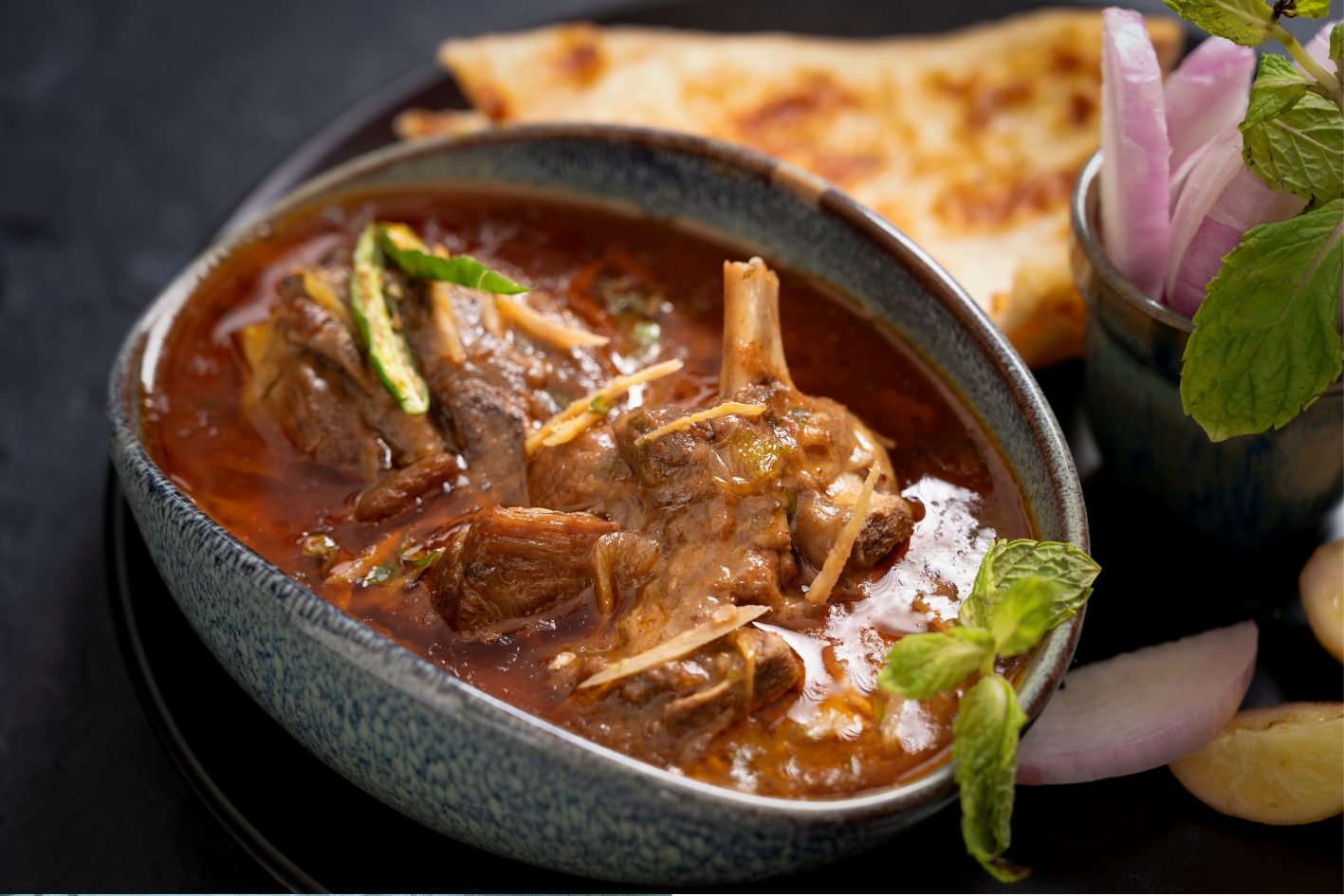
The slow-cooked soul of South Asian cuisine
" Beyond nourishment .. it is a dish of togetherness, often shared at family gatherings or weekend breakfasts in cities such as Lahore, Karachi and Delhi "
Few dishes embody the richness of South Asian cooking as perfectly as Nihari. Deeply aromatic, luxuriously spiced and slow cooked to perfection, this dish is both a culinary masterpiece and a piece of living history. Originating in the royal kitchens of Mughal-era Delhi, Nihari has evolved into a beloved staple across Pakistan and northern India, particularly enjoyed as a breakfast or brunch dish on weekends and special occasions.
The name Nihari is derived from the Arabic word nahar, meaning “day” or “morning”. Traditionally, it was eaten after fajr [Ed: the dawn prayer] to provide sustenance for the day ahead. Over time, what began as a regal morning meal became a dish for the masses, appreciated for its comforting warmth with deep, complex flavours.
At its heart, Nihari is a slow-cooked stew made with beef, mutton, goat, bone marrow or occasionally chicken, simmered for six to eight hours with a fragrant blend of spices such as ginger, garlic, cardamom, cloves, cumin and chilli. The long cooking time allows the meat to become meltingly tender and the gravy to develop a silky, rich consistency. Flour or atta [Ed: a type of wheat flour] is often added to slightly thicken the sauce, giving it its signature texture.
Traditionally, Nihari is cooked overnight in sealed pots, allowing the flavours to mature gradually. In some homes and restaurants, a portion of the previous day’s Nihari, known as taar, is added to the new batch to deepen its flavour, a practice said to preserve the dish’s heritage from one pot to the next.
Nihari is typically served with naan or kulcha*, and garnished generously with fresh ginger slivers, coriander, green chillies and a squeeze of lemon. The accompaniments cut through the richness, balancing the hearty, spiced gravy. A side of fried onions or pickles often completes the meal.
Nutritionally, Nihari is rich in protein and iron, offering warmth and energy. Qualities that make it especially valued in colder months. Beyond nourishment, however, it carries cultural meaning: it is a dish of togetherness, often shared at family gatherings or weekend breakfasts in cities such as Lahore, Karachi and Delhi.
Today, Nihari has travelled far beyond its Mughal roots. From high-end restaurants to humble street stalls, it remains a symbol of heritage, patience and the timeless art of slow cooking. This dish truly celebrates the depth and soul of South Asian cuisine.
Prepared by a Chaîne News Online Staff Writer
Researched from various sources. E&OE
* Kulcha is a type of bread popular in Punjabi cuisine, made from refined wheat flour, and fermented in earthen pots and baked in a tandoor. The term kultcha derives from a Persian term for a disc-shaped loaf of leavened bread.